TL;DR
-
Andromeda (Oct 2025) shifted Meta optimization from targeting → creative + post-install signals.
-
Algorithms now identify winning creatives faster and allocate budget more aggressively.
-
Early-campaign volatility is normal; stabilization takes longer than before.
-
Manual campaigns still give the most control; Advantage+ success varies by app and audience.
-
Creative clarity, UGC formats, and cluster testing outperform polished or generic ads.
-
Honest, expectation-setting creatives drive higher-quality users and better down-funnel actions.
-
REPLUG adapts with high creative output, signal hygiene, and channel diversification beyond Meta.
In October 2025, Meta quietly rolled out the Andromeda algorithm update with almost no formal documentation. Just a vague reference to “delivery improvements.” Yet advertisers immediately felt the shift.
Campaigns that were previously stable suddenly became unpredictable, CPAs jumped, learning phases stretched longer, and Advantage+ began distributing spend in unfamiliar ways.
Andromeda didn’t tweak optimization; it fundamentally rewired how Meta interprets creative signals and predicts user intent. Here's more about this app industry news.
We’re REPLUG, a Berlin-based app marketing agency specializing in OEM marketing, paid user acquisition, ASO, tracking and analytics, and more.
Contact us today for expert solutions to promote your app and scale through mobile marketing.
What Actually Changed
After observing this update at scale, here’s the real impact seen across accounts and verticals:
- The algorithm now re-evaluates signals more aggressively, especially early in campaigns.
- Stabilization takes longer, forcing campaigns to “prove themselves” before Meta commits consistent spend.
- Meta is now using creative-level and post-install signals as primary quality indicators.
- With less dependency on targeting, volatility increases when signal clarity is weak.
In this new environment, the creative itself (not targeting) is now the dominant signal.
What We See Inside REPLUG’s Campaigns (Denis)
1. Creative performance is revealed faster
Winners and losers separate almost instantly.
- High CPI early → stays high → cut it fast
- Low CPI early → drives more post-install events → scale it
Meta’s system now commits more confidently to a creative direction once early signals appear.
2. Budget allocation is more aggressive
The Andromeda algorithm picks “strong” creatives from the first signals and sends most of the spend their way.
Under-performing creatives barely get impressions anymore.
Great for speed, but it requires producing more variations to avoid early elimination.
3. CPA swings happen faster
Creative fatigue triggers CPA volatility quicker than before.
Monitoring cycles matters more now because the system rotates ads at a higher pace.
Advantage+ vs Manual After Andromeda
At REPLUG, we still prefer manual campaigns for control. But:
- Advantage+ broad works well for some clients
- Interest-based performs better for others
- Demographics influence performance more than pre-update
One thing remains consistent:
Reels, Stories, and Feeds continue to be the top-performing placements.
Geo Performance: DACH Insight
In the DACH region specifically, we haven’t seen major behavioral changes post-update.
Stability remained relatively consistent, with vertical performance having more impact than geography.
How We Maintain Stability at REPLUG
Our structural foundation did not need a dramatic revision. Andromeda essentially rewarded what we were already doing:
✔ Producing high creative volume
✔ Testing at scale before committing
✔ Prioritizing ROAS-focused evaluation
✔ Matching creative + targeting pairings
✔ Scaling only validated combinations
Because of this, we’ve been able to maintain predictable performance even during volatile delivery phases.
If you want us to examine your current Meta setup and identify where Andromeda may be blocking performance, we’ll do a quick audit and tell you what needs fixing.
Reach out, and let’s get to work.
How the Update Changed Creative Strategy (Tuğçe)
1. Creative signals now decide everything
Andromeda reads signal clarity aggressively.
Winning patterns:
- Simple, problem → solution → proof
- Strong opening hooks
- Real UI
- Text overlays + voice + visuals
- Content that sets expectations
The algorithm rewards clarity of message, not the cleverness of your targeting.
2. UGC-style formats outperform polished visuals
Winning formats:
- Creator-led videos
- Fast, native-feeling edits
- Several AI-generated variants
- Real app flows and testimonials
Underperforming formats:
- Static banners (depends on campaign)
- Lifestyle shots without UI
- Cinematic ads that look like commercials
Why?
Because Andromeda optimizes for predictable engagement and in-app intent, not shallow clicks.
3. Creative honesty determines user quality
Broad delivery means cheap installs are easy, but often irrelevant.
We see:
- Clickbait / vague creatives → strong CTR, weak actions
- Honest, product-forward creatives → higher CPI, but stronger funnel results
Creative honesty is now the user filter.
4. Test results show Andromeda’s “preferences”
Across multiple tests:
- Creative concepts in clusters (5–10 variations) outperform single assets
- Multiple reinforcing signals accelerate prioritization
- Modular creative structures convert best
- Creatives that clearly communicate “who it’s for and what it does” outperform emotional fluff
Meta now behaves like a content classifier, not just a distribution engine.
5. Cross-vertical patterns are clearer
- Dating apps: chat UI, real conversations > pretty people
- Subscription/wellness/productivity: app demos + real use cases > moodboards
- Transactional / utility: direct benefit messaging + UI flows > lifestyle aesthetics
Across verticals, the winning creative is the one that gives Andromeda the clearest interpretive data.
REPLUG’s Takeaway
Andromeda reinforced a shift that was already underway:
Creative clarity is now the most powerful lever in Meta’s advertising ecosystem.
To win under this system, we focus on:
✔ Creative diversity
✔ Machine-readable narratives
✔ Concept clustering
✔ Down-funnel signal testing
✔ Frequent refresh cycles
This volatility also highlights why brands shouldn’t rely solely on one acquisition channel.
Future Outlook: Full Automation on the Horizon
At REPLUG, we’re watching a big shift: Meta Platforms’s move toward fully-automated ad creation and targeting.
According to reports, Meta plans to let advertisers submit a product image + a budget, and its AI handles everything (imagery, video, text + targeting) by the end of 2026.
We don’t know every detail yet, and no, you shouldn’t panic. But this changes the game.
Here’s how we’re thinking about it:
“Automation won’t replace marketers; it will force us to evolve. Creative strategy, message clarity, and strong KPIs are now more critical than ever. The algorithm may go blind-faster if signals (creative + event) aren’t crystal-clear. So we lean into that instead of fighting automation.”
What this means for you now:
- Don’t wait to react. The shift is underway.
- Keep building signal-rich creatives and tight event-mapping.
- Manual controls still matter, but prepare for less control in the future.
- Your advantage: human insight + strategic storytelling will be what automation can’t fully execute.
- Yes, we continue the great work, because strong fundamentals will buffer whatever automation throws at us.
Why it shouldn’t derail you:
Meta’s roadmap doesn’t mean manual skills are obsolete overnight.
It means: those with a bad setup will fall further behind. With clean tracking, high-volume testing, and smart creative signals (which we’ve already built into our approach), you’re ahead of the curve.
If you want guidance on adapting to Andromeda and building a channel mix that won’t collapse every time Meta changes the rules, reach out.
At REPLUG, we work with app teams to stabilize delivery, expand into high-intent channels, and scale growth without being hostage to a single platform.














